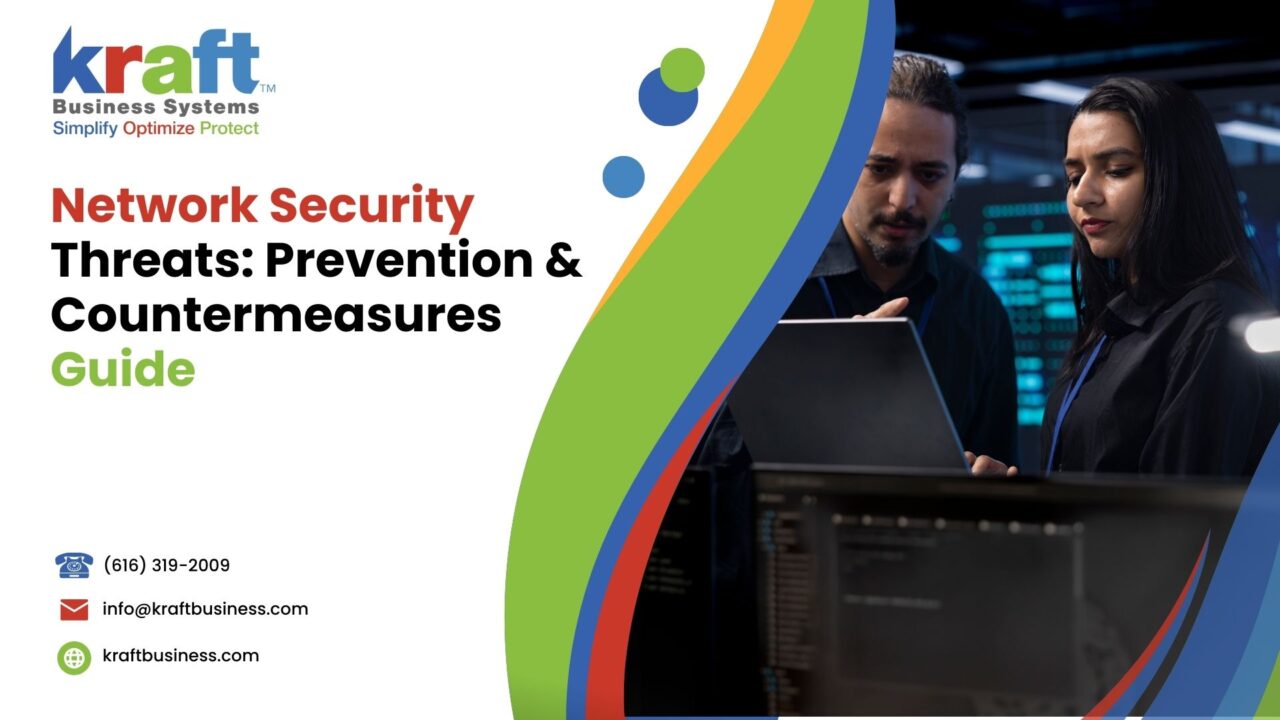Nearly 43% of cyberattacks target small businesses. This alarming statistic underscores the importance of understanding network security threats. This guide outlines how to identify vulnerabilities in your network and implement effective prevention measures, including security information and event management strategies. Readers will discover practical countermeasures to combat exploits and safeguard web applications, ensuring their web traffic remains secure. By addressing these common pain points, this content will help business owners fortify their networks against potential threats.
Essential Insights and Key Points to RememberKey Takeaways
- Recognizing different types of cyber attacks is vital for effective network protection
- Regular security audits help identify and address vulnerabilities in business networks
- Implementing multi-factor authentication significantly reduces risks associated with unauthorized access
- Educating employees on security best practices strengthens overall data protection efforts
- Collaborating with cybersecurity professionals enhances a business’s resilience against evolving threats
Understanding Network Security Threats

Recognizing different types of cyber attacks is crucial for maintaining data security. Businesses face significant impacts such as downtime and compromised visibility in their data centers when network threats occur. Understanding common vulnerabilities exploited by attackers helps in implementing the principle of least privilege and fortifying defenses against these threats. The following sections will delve deeper into each aspect, highlighting their importance and practical countermeasures.
Recognizing Different Types of Cyber Attacks
Recognizing different types of cyber attacks is essential for businesses aiming to protect their networks effectively. Common threats include malware, phishing, and denial-of-service attacks, all of which can exploit vulnerabilities in a company’s firewall or kernel. Cybersecurity certification and training can equip staff with the knowledge needed for risk mitigation, ensuring they are prepared to identify and respond to these attacks swiftly.
The Impact of Network Threats on Businesses
The impact of network threats on businesses can be significant, affecting both operations and reputation. A successful cyber attack may lead to unauthorized access to sensitive data, highlighting the importance of robust network security measures such as authentication protocols and application firewalls. Additionally, developing comprehensive cybersecurity policies that include encryption through cryptography is essential to mitigate risks and ensure that businesses can respond effectively to potential threats, safeguarding their assets and client trust.
Common Vulnerabilities Exploited by Attackers
Common vulnerabilities exploited by attackers often relate to flaws in network protocols, such as the transmission control protocol (TCP). Attackers may target weaknesses in TCP to execute attacks that disrupt data transport and compromise information security. For instance, improperly configured firewalls or open ports can serve as gateways for unauthorized access, making it essential for businesses to regularly assess their security settings to protect against these threats.
Now that the threats are clear, it’s time to turn the focus inward. Identifying the weaknesses in your network will help protect what matters most.
Identifying Vulnerabilities in Your Network

Identifying vulnerabilities in a network is a critical step for enhancing security and protecting sensitive data. Conducting a thorough security audit helps pinpoint weaknesses, while penetration testing offers a proactive approach to assess vulnerabilities. Additionally, analyzing network traffic for suspicious activities can aid in detecting extortion attempts or compliance issues with the Payment Card Industry Data Security Standard (PCI DSS) and ensure robust disaster recovery strategies, especially in environments like Microsoft Azure.
Conducting a Thorough Security Audit
Conducting a thorough security audit is essential for identifying vulnerabilities within a network, particularly in an era of cloud computing and stringent regulations such as the General Data Protection Regulation (GDPR). This process should include evaluating access control mechanisms and implementing a zero trust security model to ensure that every access request is verified. Regular surveillance practices can enhance the audit process by monitoring network activity and detecting any unauthorized attempts to access sensitive information.
- Evaluate existing network security policies.
- Assess access control measures implemented.
- Implement a zero trust security model.
- Conduct regular surveillance of network traffic.
- Ensure compliance with the General Data Protection Regulation.
Using Penetration Testing for Vulnerability Assessment
Using penetration testing for vulnerability assessment is an effective method to identify and address potential security gaps within a network. This proactive approach simulates real-world cyber attacks, allowing businesses to assess their perimeter defenses against threats like code injection and other cloud vulnerabilities. By integrating security testing into regular risk assessments, organizations can strengthen their overall security posture and better protect sensitive data from attackers.
Analyzing Network Traffic for Suspicious Activities
Analyzing network traffic for suspicious activities is a fundamental aspect of maintaining robust information assurance. By monitoring data flow, businesses can identify entry points that may be exploited by botnets or malware, preventing potential breaches before they occur. Additionally, ensuring regulatory compliance requires rigorous examination of network patterns to detect anomalies that could signal an ongoing attack, allowing organizations to react swiftly and effectively.
Vulnerabilities stand out like open doors in the dark. It is time to close those doors and take action with effective prevention measures.
Implementing Effective Prevention Measures

Implementing effective prevention measures is crucial for protecting businesses from network security threats. This section focuses on strengthening firewall configurations to block intrusions, enforcing strong access control policies to limit unauthorized access, and regularly updating and patching systems to defend against vulnerabilities. Additionally, educating employees on security best practices will reduce the risk of fraud and other attacks by threat actors targeting various sectors, including the supply chain and endpoint security. Each of these strategies plays a vital role in establishing a robust defense against cyber threats.
Strengthening Firewall Configurations
Strengthening firewall configurations is a critical strategy in preventing network security threats such as pharming attacks, which redirect users from legitimate sites to fraudulent ones. Regular audits of firewall settings should be conducted to ensure that only necessary ports are open and that appropriate quality of service measures are in place to filter malicious traffic. Additionally, integrating identity management solutions and considering biometrics can enhance security by ensuring that only authorized personnel have access to sensitive network areas.
Enforcing Strong Access Control Policies
Enforcing strong access control policies is essential for maintaining computer security and safeguarding sensitive data from unauthorized access. By implementing measures such as role-based access controls and least privilege principles, organizations can minimize vulnerabilities that could lead to data loss or threats to data integrity. Regularly reviewing access rights ensures that only authorized personnel have interface with critical systems and information, significantly reducing the risk of security breaches.
- Implement role-based access controls
- Adopt least privilege principles
- Regularly review access rights
- Educate staff about access control protocols
- Monitor and audit access logs
Regularly Updating and Patching Systems
Regularly updating and patching systems is a fundamental practice for preventing network security threats such as computer viruses and ransomware. By keeping routers, operating systems, and software applications current, businesses can close potential backdoors that attackers exploit to gain unauthorized access. Implementing a routine schedule for updates not only enhances security but also fortifies overall system resilience against evolving cyber risks, ensuring that organizations can better protect sensitive data and maintain uninterrupted operations.
Educating Employees on Security Best Practices
Educating employees on security best practices is essential for protecting sensitive data and ensuring confidentiality, especially in environments with increased remote work. Organizations should train staff to recognize phishing attempts and the importance of maintaining secure antivirus software to defend against malware threats. Additionally, understanding the risk associated with disclosing their IP address and having protocols in place for database security can empower employees to contribute actively to the overall network security of the company.
Having laid the groundwork for prevention, the next step is critical. It’s time to shift focus and take decisive action against emerging threats.
Deploying Countermeasures Against Threats

Deploying effective countermeasures against network security threats is vital for any organization. This section will explore setting up intrusion detection and prevention systems to monitor for suspicious activities, utilizing encryption with public key certificates to protect sensitive data, establishing a robust incident response plan for quick reactions to cyberattacks, and the importance of real-time system monitoring to combat phishing and social engineering threats.
Setting Up Intrusion Detection and Prevention Systems
Setting up intrusion detection and prevention systems (IDPS) is a keystrategy for mitigating threats in cyberspace, particularly against sophisticated attacks like sql injection and ransomware attacks. These systems monitor network traffic for suspicious activities and automatically block potential threats, thus enhancing overall cloud security. Utilizing sandboxing techniques allows businesses to analyze and isolate malware before it can execute, reinforcing defenses and ensuring that sensitive data remains protected against emerging threats.
Utilizing Encryption for Data Protection
Utilizing encryption for data protection is a fundamental countermeasure against network security threats that helps secure sensitive information transmitted over wide area networks. By implementing strong encryption protocols, businesses can protect data from unauthorized access during transmission, especially in environments where employees may engage in bring your own device practices. Moreover, regularly applying software testing and patching strategies ensures encryption methods remain effective against evolving threats, safeguarding critical data assets from attackers.
Establishing an Incident Response Plan
Establishing an incident response plan is essential for businesses to manage network security threats effectively. This plan should outline a clear methodology for addressing potential cyber incidents, incorporating advanced encryption techniques to safeguard sensitive information and maintain data integrity during a breach. Moreover, integrating physical security measures within critical infrastructure ensures comprehensive protection, allowing organizations to respond swiftly and efficiently to minimize damage when threats arise.
Monitoring Systems in Real-Time
Monitoring systems in real-time is crucial for defending against network security threats and ensuring a robust software supply chain. By implementing solutions that continuously oversee web servers and detect anomalies associated with internet control message protocol vulnerabilities, businesses can respond swiftly to potential breaches. Additionally, real-time monitoring can mitigate the risks of voice phishing attacks, helping firms safeguard sensitive information during software development processes.
Countermeasures are just the first step; maintaining strong security requires constant vigilance. Best practices will guide the way to a safer network, ensuring businesses remain protected.
Best Practices for Ongoing Network Security

To maintain strong network security, businesses must adopt best practices that address the ever-evolving threatlandscape. Regularly backing up critical data protects against data breaches and minimizes disruptions. Implementing multi-factor authentication strengthens access controls, while staying informed on emerging threat trends aids in reducing the attack surface. Collaborating with security professionals enhances supply chainrisk management and aligns with national security agency guidelines for safeguarding classified information.
Regularly Backing Up Critical Data
Regularly backing up critical data is an essential practice for safeguarding a business’s information technologyinfrastructure against threats like ransomware as a service. In the event of an attack, having up-to-date backups stored securely in a demilitarized zone (DMZ) allows organizations to restore their systems quickly and minimize downtime, protecting both operations and reputation. By implementing a routine backup schedule and utilizing a combination of on-site and cloud storage solutions, businesses can ensure their sensitive data remains safe and accessible, even under adverse conditions.
Implementing Multi-Factor Authentication
Implementing multi-factor authentication (MFA) is a keystrategy for reducing the risk of unauthorized access to sensitive data. By requiring users to provide multiple forms of verification, such as a USB token or a one-time password alongside their standard credentials, organizations significantly enhance their security posture. Following guidelines from the National Institute of Standards and Technology (NIST), businesses can ensure that their systems are more resilient against threats, including rootkits and other malicious software attacks, by reinforcing transport layer security to protect data in transit.
- Enhances security through multiple verification methods
- Reduces risks associated with unauthorized access
- Aligns with guidelines from the National Institute of Standards and Technology (NIST)
- Utilizes USB tokens and one-time passwords
- Reinforces transport layer security to protect data
Keeping Up With Emerging Threat Trends
Keeping up with emerging threat trends is essential for businesses to enhance their network security. With the increasing sophistication of cyber attacks, organizations must conduct regular vulnerability assessments to identify potential weaknesses in their systems, including name servers and architecture. Staying informed about trends such as cryptocurrency-related attacks and flood threats can significantly improve an organization’s ability to adapt and respond proactively, thereby fortifying defenses against evolving risks:
- Conduct regular vulnerability assessments.
- Stay informed about cryptocurrency-related attacks.
- Monitor flooding threats targeting network resources.
- Evaluate and strengthen architecture against emerging vulnerabilities.
- Update defense strategies based on the latest threat intelligence.
Collaborating With Security Professionals
Collaborating with security professionals is a strategic approach for businesses looking to strengthen their network security posture. These experts can provide tailored risk management solutions, helping organizations in the private sector navigate the complexities of cyber threats, such as supply chain attacks. Engaging with professionals ensures that end users receive the support and guidance needed to implement effective security measures, thereby enhancing overall resilience against potential breaches.
Network security today is strong, but threats change and grow. Preparing for future challenges is not just wise; it is necessary for survival.
Preparing for Future Security Challenges

Investing in advanced security technologies, such as intrusion detection systems and web application firewalls, is essential for businesses to stay ahead of evolving threats. Adapting to the changing cybersecurity landscape requires organizations to continuously enhance their application security and backup strategies. Additionally, building a proactive security culture within the organization encourages employees to prioritize security, especially concerning mobile devices.
Investing in Advanced Security Technologies
Investing in advanced security technologies is integral for businesses to combat the growing threats of cyberwarfare. Solutions such as Secure Access Service Edge (SASE) combine networking and security functions to provide organizations with secure and efficient access to their computer network. By enhancing their security posture with these technologies, businesses protect their assets and ensure they remain resilient against evolving cyber threats, safeguarding sensitive data and maintaining operational continuity.
Adapting to the Changing Cybersecurity Landscape
Adapting to the changing cybersecurity landscape is essential for businesses to effectively combat emerging threats such as ransomware. Organizations must stay informed about evolving regulations and industry standards provided by organizations like ISACA. Engaging certified cybersecurity professionals can help businesses architect a robust security framework tailored to their unique needs, ensuring protection against potential breaches and maintaining their operational integrity.
Building a Proactive Security Culture Within the Organization
Building a proactive security culture within the organization is essential for safeguarding against cybercrime. This involves training employees to recognize threats and understand the importance of password strength, which serves as the first line of defense. Engaging a certified information systems security professional to lead training sessions not only enhances awareness but also establishes best practices, such as the strategic use of honeypots to detect intrusions early. Additionally, organizations must ensure compliance with relevant laws to maintain a secure environment, emphasizing that every team member plays a critical role in protecting sensitive information.
Conclusion
Understanding network security threats is essential for businesses looking to safeguard their sensitive data and maintain operational integrity. By recognizing the various types of cyber attacks and common vulnerabilities, organizations can implement robust prevention measures that significantly reduce risk. Engaging in proactive strategies, such as conducting regular audits and training employees, strengthens defenses against emerging threats. Ultimately, prioritizing network security ensures resilience, protects valuable assets, and fosters trust with clients and stakeholders.






